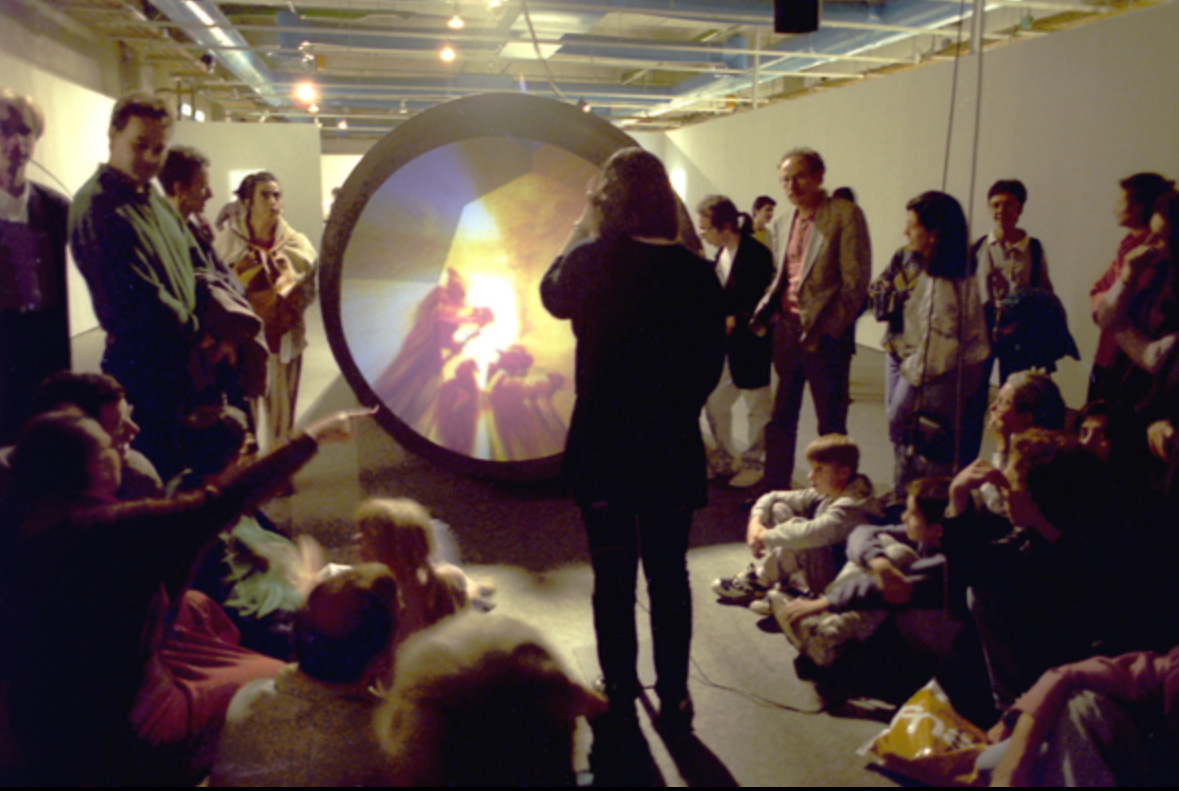
An image which may or may not be related to the article. FREEPIK
Interactive Installations: When Art Needs Participation
Summary:
Art isn’t just something to be observed anymore—it’s something to be experienced. Interactive installations have transformed museums and galleries into playgrounds where the audience isn’t just a passive spectator but an active participant. From Yayoi Kusama’s infinity rooms to Rafael Lozano-Hemmer’s biometric light displays, this new wave of art demands engagement. But is interactivity enhancing the meaning of art, or is it just another gimmick to attract attention in an era of short attention spans?
Once upon a time, museums were sacred, silent spaces where you shuffled through hallways, hands firmly behind your back, staring at paintings while alarms and security guards made it clear: Look, but don’t touch.
But art is evolving. And in many cases, it no longer exists without an audience’s touch.
Interactive installations have upended traditional expectations of art, pulling people out of their passive roles and making them part of the creative process. Suddenly, the art isn’t just there—it responds, shifts, and adapts based on human interaction.
And the public? They can’t get enough.
The Rise of Interactive Art: Breaking the Fourth Wall of the Gallery
For decades, art relied on the idea of the observer as an outsider. You admired a painting, you analyzed a sculpture, but you never became part of it.
But something changed. Maybe it was technology. Maybe it was our collective craving for connection in a digital world. Maybe it was the simple realization that art becomes more meaningful when people engage with it directly.
Now, the best-known art exhibitions aren’t just things to see—they’re things to experience. The rise of social media and immersive technology has created a demand for installations that allow people to step inside the art, to manipulate it, to let it react to their presence.
And nothing gets people through gallery doors faster than an artwork that promises engagement.
Icons of Interactivity: The Artists Redefining Art
The shift toward interactive installations isn’t just about gimmicks—it’s being driven by groundbreaking artists who are reshaping the way we think about creativity and participation.
What all of these works share is the idea that the audience is not just a viewer—they are part of the artwork. Without participation, the installation ceases to function.
Is Interactivity the Future of Art?
Some critics argue that interactive art is a fleeting trend, fueled by selfie culture and the need for novelty. But interactivity isn’t new—it’s been around in different forms for centuries, from ancient labyrinthine gardens to kinetic sculptures.
What’s changing is the way technology allows for deeper engagement. As AI, VR, and motion-sensing tech advance, the potential for interactive installations will only grow. Museums, once places of quiet reverence, are now embracing sound, movement, and direct participation.
And maybe that’s a good thing. Maybe the true power of art isn’t just in looking at it—but in becoming part of it.
But art is evolving. And in many cases, it no longer exists without an audience’s touch.
Interactive installations have upended traditional expectations of art, pulling people out of their passive roles and making them part of the creative process. Suddenly, the art isn’t just there—it responds, shifts, and adapts based on human interaction.
And the public? They can’t get enough.
The Rise of Interactive Art: Breaking the Fourth Wall of the Gallery
For decades, art relied on the idea of the observer as an outsider. You admired a painting, you analyzed a sculpture, but you never became part of it.
But something changed. Maybe it was technology. Maybe it was our collective craving for connection in a digital world. Maybe it was the simple realization that art becomes more meaningful when people engage with it directly.
Now, the best-known art exhibitions aren’t just things to see—they’re things to experience. The rise of social media and immersive technology has created a demand for installations that allow people to step inside the art, to manipulate it, to let it react to their presence.
And nothing gets people through gallery doors faster than an artwork that promises engagement.
Icons of Interactivity: The Artists Redefining Art
The shift toward interactive installations isn’t just about gimmicks—it’s being driven by groundbreaking artists who are reshaping the way we think about creativity and participation.
- Yayoi Kusama – Infinity Mirrors: The queen of interactive art, Kusama’s mirrored rooms create endless reflections of the self, making the viewer part of an infinite universe. Her exhibitions sell out in minutes, proving that people aren’t just interested in seeing art—they want to *be inside* it.
- Rafael Lozano-Hemmer – Biometric Art: Using heartbeat monitors, motion sensors, and AI-driven technology, Lozano-Hemmer’s works create hypnotic light displays that literally pulse with the rhythms of their viewers.
- Random International – Rain Room: A technological marvel, this installation allows visitors to walk through a downpour without getting wet, as motion sensors control where the rain falls.
- TeamLab – Digital Ecosystems: This collective blends science and art, creating massive digital projections that react to the movements of visitors, turning entire rooms into interactive landscapes.
What all of these works share is the idea that the audience is not just a viewer—they are part of the artwork. Without participation, the installation ceases to function.
Is Interactivity the Future of Art?
Some critics argue that interactive art is a fleeting trend, fueled by selfie culture and the need for novelty. But interactivity isn’t new—it’s been around in different forms for centuries, from ancient labyrinthine gardens to kinetic sculptures.
What’s changing is the way technology allows for deeper engagement. As AI, VR, and motion-sensing tech advance, the potential for interactive installations will only grow. Museums, once places of quiet reverence, are now embracing sound, movement, and direct participation.
And maybe that’s a good thing. Maybe the true power of art isn’t just in looking at it—but in becoming part of it.
 muppazine
muppazine